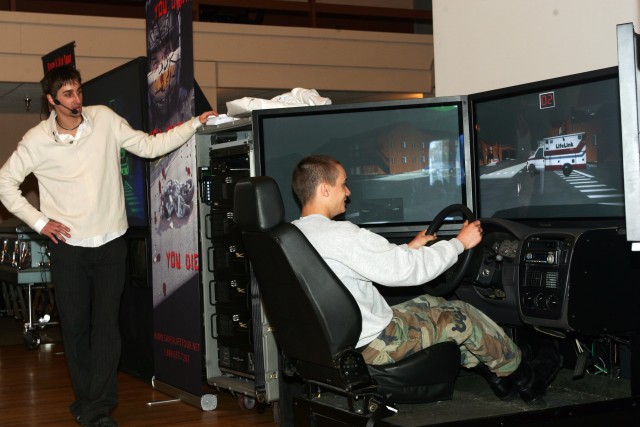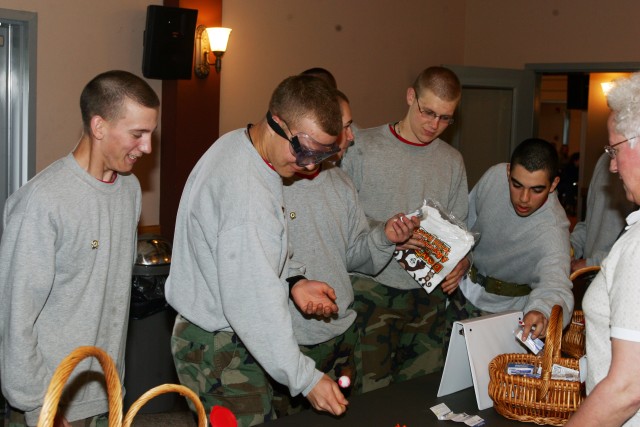Students, cadets and members of the Fort McCoy community learned, reviewed and experienced how drinking and driving don't mix during a "Save a Life Tour" event April 27 at Fort McCoy.
"We emphasize to be there for your friends (when they've had too much to drink)," Geysbeek said. "If they try to drive, don't let them. Step up and take their keys."
A driving simulator shows participants the effects of drinking on drivers' reaction time. Geysbeek said the experience doesn't include losing or having impaired equilibrium, balance or other motor skills.
"This experience gives them hands-on experience (of what it's like to drive drunk) behind the wheel," he said. "It's like a video game so it catches their interest."
Everyone has a similar reaction to driving under impaired conditions, he said. For example, even though people are told not to turn the wheel to correct the path of their vehicle they tend to do it anyway.
The program also includes a video telling the effects of drinking and driving, several displays with facts about drinking and driving and a coffin. Geysbeek said everyone is impacted differently by the exhibits, but it is hoped that one of the exhibits will affect the participants.
With about 50,000 fatal accidents a year on U.S. roadways and a little more than half of them being alcohol related, Geysbeek said the simulations attempt to present the sobering facts to the attendees so they will decide not to drink and drive.
Nina Manke, who bought a student group in the high-school age category from the Sparta Charter School, said many of the youths in the group were age 16 - about the age they learn to drive.
"I wanted them to see up front what the choices of drinking and driving could do," Manke said. "Hopefully, this will help convince them to make good choices and not drink and drive."
Eric Pedersen, the Fort McCoy Army Substance Abuse Program (ASAP) coordinator, said the ASAP arranged to have the tour to support April as Alcohol Awareness Month.
The activities also included exhibits from the Installation Safety Office, including fatal vision goggles that replicate various levels of impairment, and the SIDNE, a Simulated Impaired DriviNg Experience vehicle. A SIDNE is a battery-powered vehicle that simulates the effects of alcohol or other drugs on a motorist's driving skills and reaction time.
"We arranged this to bring information to the Fort McCoy community (including the ChalleNGe Academy cadets) and also to the neighboring communities about the dangers of drinking and driving," Pedersen said. "We hope to be able to arrange something similar for next year's Alcohol Awareness Month."
For more information about the "Save a Life Tour," visit the Web site http://www.savealifetour.com or call 888-655-7263.
For more information about alcohol awareness in the Fort McCoy community, call the Fort McCoy Army Substance Abuse Program 608-388-2441.






Social Sharing